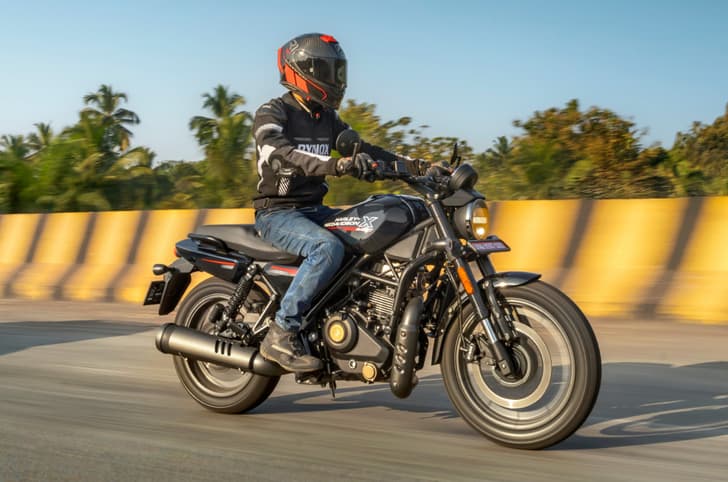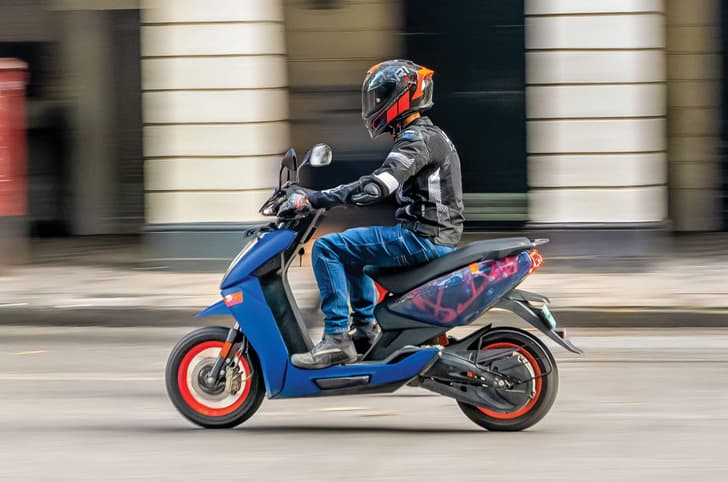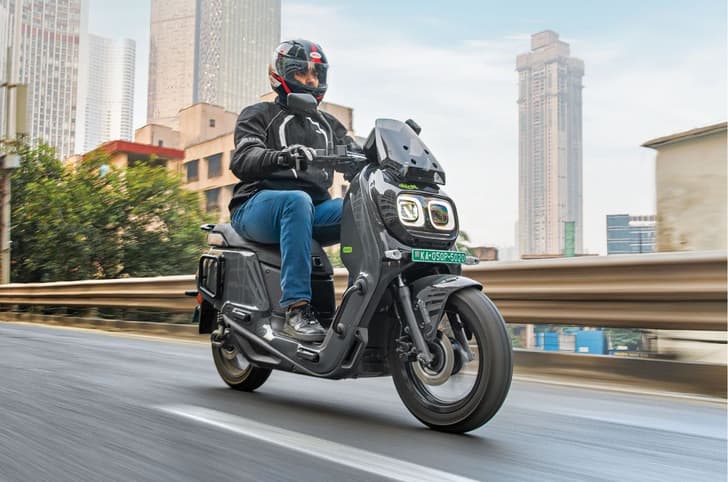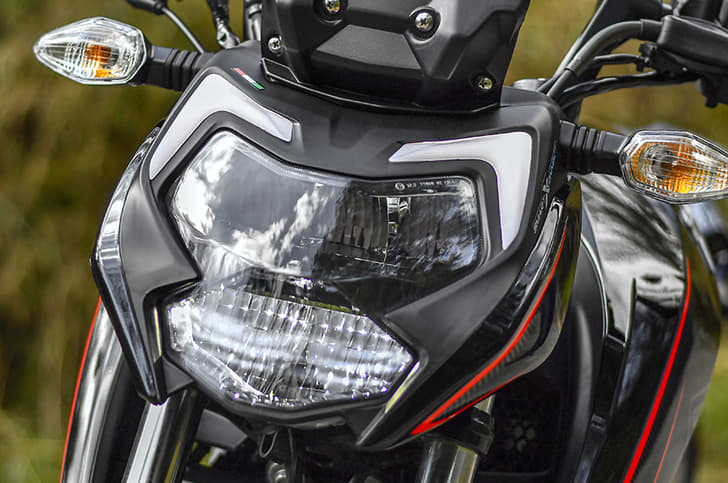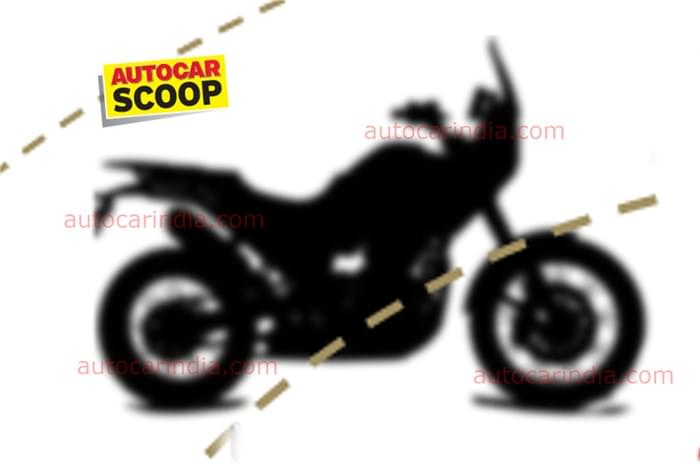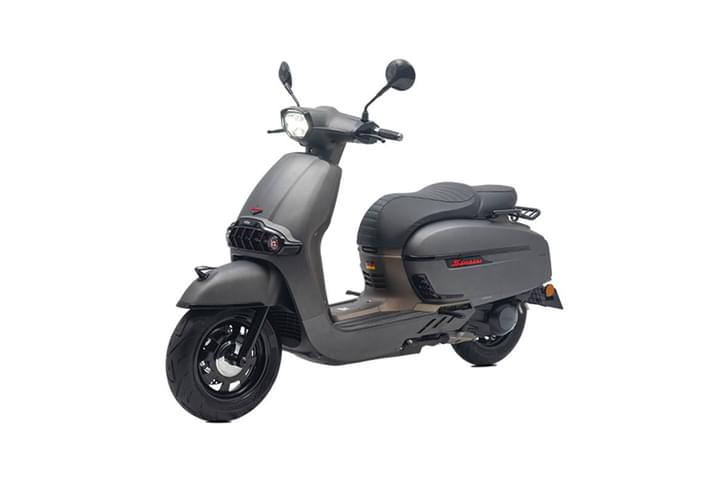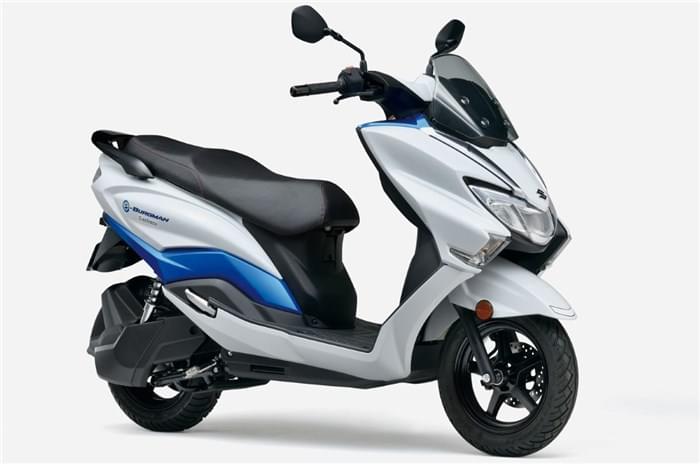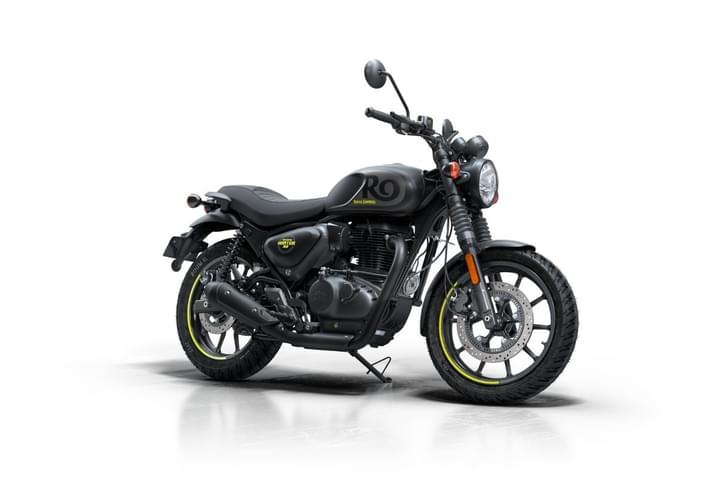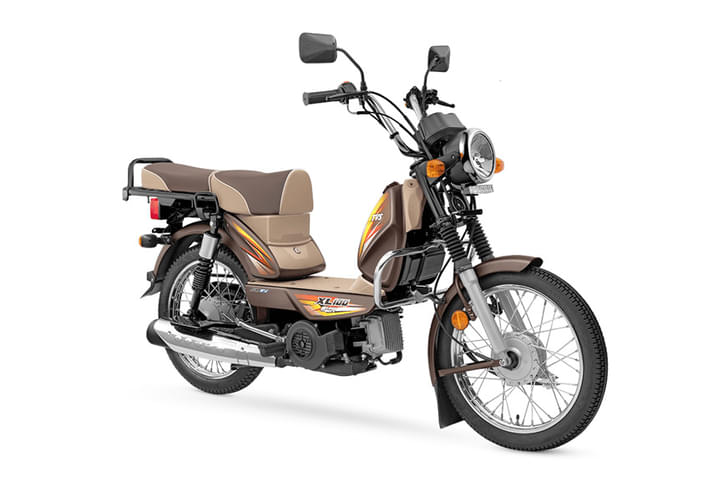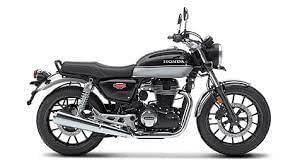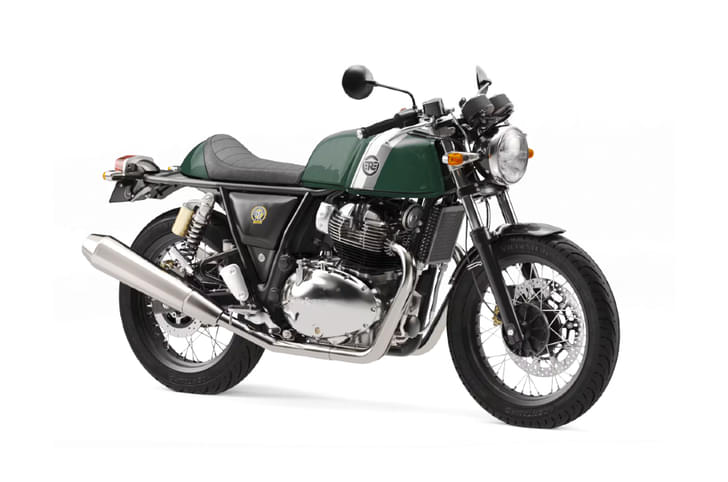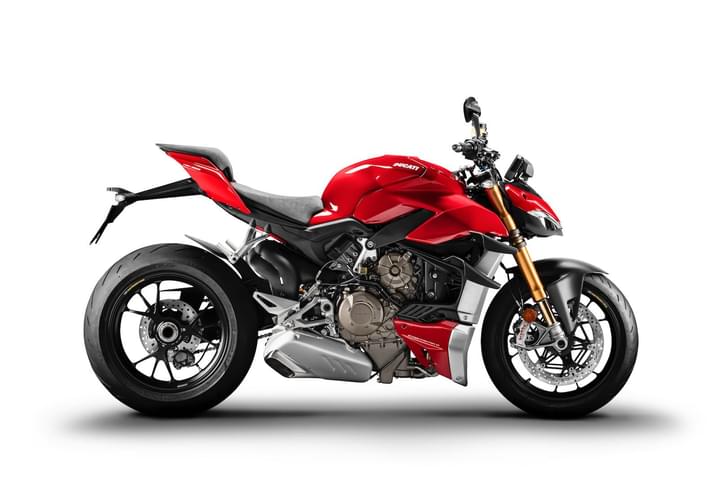Harley-Davidson is quite unique when it comes to its approach to making motorcycles. Where most companies build the motorcycles they think their customers should have, Harley keeps a keen eye on the custom bike scene and builds machines inspired by what the latest rage happens to be. The new Low Rider S is forged from this philosophy and it takes its inspiration from the West Coast custom scene – picture the kind of bikes you’ll see in the California-based TV show Sons of Anarchy.
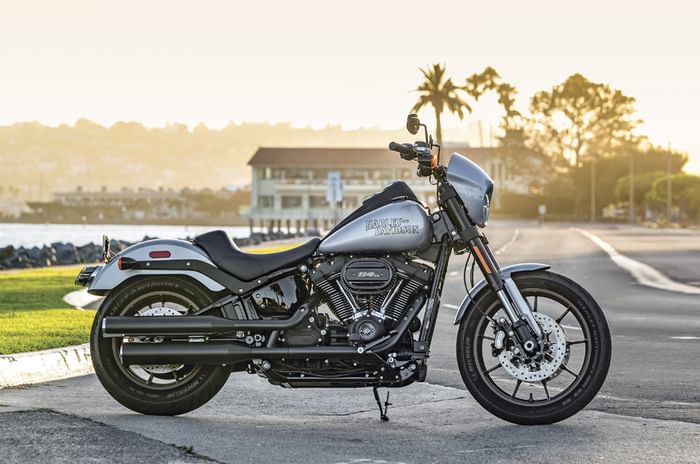
The Low Rider S fits into the Harley-Davidson Softail family and the S in its name stands for Special. Whenever Harley uses the term ‘Special’, you’ll see a blacked-out theme replacing much of the chrome. On this bike, small touches of chrome on the engine fins, pushrods and exhaust tips nicely offset the otherwise dark theme. Completing the custom look is a tall-set quarter-fairing at the front and a low fender at the rear with a single-seat layout. The foot pegs remain in the same mid-position layout as the standard Low Rider, but the handlebar position is vastly different. Instead of the Low Rider’s comfy, pulled-back ‘buckhorn’ bar, the S gets a wide ‘motocross style’ bar that sits atop a 4.0-inch riser. The result is a very tall bar that has you stretching forward and wide for that proper California-cool vibe.
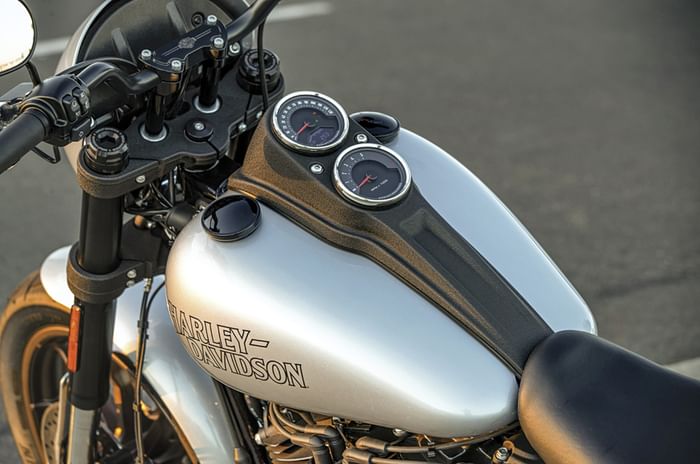
Catching a glimpse of my reflection in one of San Diego’s flashy buildings, I find myself agreeing that the riding position is well in line with what Harley calls the quintessential badass performance cruiser. After about half an hour though, this transforms from badass to just pain in the ass, because your shoulders, arms and lower back are doing quite a bit of work to stay in this rather unnatural position. The mid-mounted pegs didn’t help either and a tall rider will feel a little locked in. But this is no tragedy because Harley is riding positions are almost infinitely tweakable, and you could swap out the bar, pegs and even the seat for a range of accessory units in the quest of something more agreeable.
Impractical riding position aside, the Low Rider sits on the now familiar and quite likeable Softail family of chassis. Interestingly, this bike has much more in common with the Fat Bob’s frame rather than the Low Rider’s. It gets the Bob’s sharper steering rake of 28 degrees (two less than the Low Rider), as well as the 43mm USD fork and twin disc front brake setup. Unlike the Fat Bob – with its chunky 16-inch tyres – the Low Rider S sticks with the slimmer 19-inch front and 16-inch rear setup from the standard Low Rider. The S, however, gets another big differentiating mechanical aspect from its standard sibling, and that is the engine.
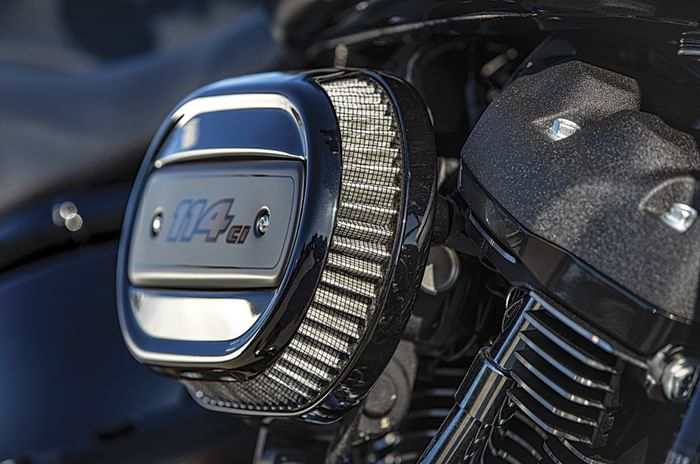
Aside from the black theme, whenever a Harley wears the S moniker, it also gets a bigger engine than its standard sibling. In this case the Low Rider S upgrades from the 107 Milwaukee Eight V-twin to the larger 114 Model. Those numbers denote the cubic capacity in inches, which translates to 1,868cc in the metric system. With such a gigantic capacity and no interest in revs beyond the 5,000rpm mark, this motor is a titan of torque. There’s 161Nm of gut-wrenching shove available at just 3,000rpm, and even though the throttle response is smooth, you have to be very careful with your inputs at low speeds because this hog is always ready to leap. I’m a fan of the Milwaukee-Eight series of engines and this one is no less likeable. Nasty vibrations are a thing of the past, but that old-school Harley rumble and roar is still intact and the engine surges to 140kph with absolute ease.
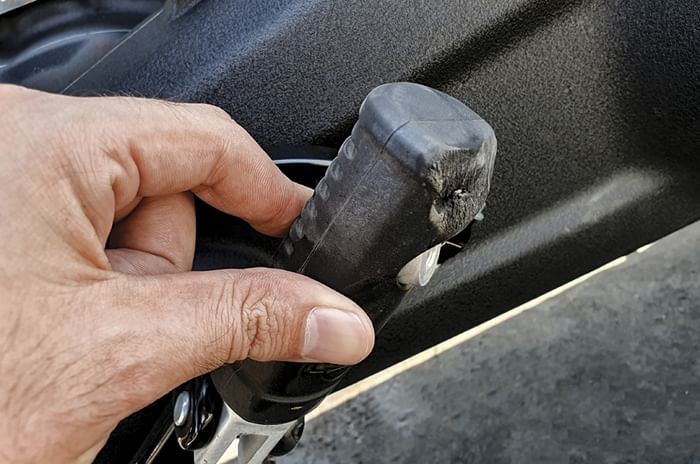
With so much shove on offer, it’s a good thing the chassis can match up. The bike feels stable in every situation, which is something you’d expect from a machine that weighs 308kg fully-fuelled. Over California’s patchy canyon roads, the suspension’s firm setup was apparent, but the Low Rider S doesn’t mind a bit of a play. The braking setup is powerful enough, but without bordering into sports bike space, and the Michelin Scorcher tyres perform in a similar vein. As with pretty much every large Harley-Davidson, the fun slams to a premature end when the foot pegs grind down; just 30.1 degrees of clearance at either side means you could scrape these pegs at city speeds without much effort. Keeping with the Harley sense of old-school motorcycling, the only electronic safety assist you’ll find is a dual-channel ABS setup.
The Low Rider S will go on sale in India at the end of the year, with an India Bike Week launch seeming quite likely. The bike maker is keen to price it well and we could be looking at a sub-Rs 15 lakh price point, which will make this the most affordable Harley with a 114 motor in India. The Low Rider S’ engine and chassis combine forces to offer a riding experience that’s very particular to a Harley and good fun all the way through. The ergonomics, however, are quite unconventional in the way the rider is seated, and whether Harley aficionados in India are willing to overlook that is something I’m keen to see.
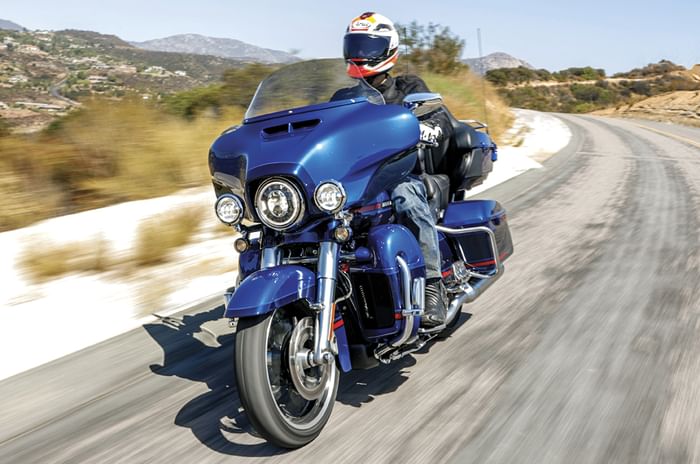
2020 TOURING FAMILY UPDATES
For 2020, the Touring range receives the H-D Connect smart system and what Harley calls the Reflex Defensive Rider System (RDRS). This is a new electronic safety suite enabled by a Bosch six-axis IMU that introduces corner-sensitive ABS and traction control systems. The brakes have a linked function and Harley has also introduced a Vehicle Hold system that prevents the vehicle from rolling when the rider stops on an incline. Finally, RDRS brings something called the Drag-Torque Slip Control System, which aims to prevent rear wheel lock during aggressive engine braking. This works similarly to an engine brake control system.




